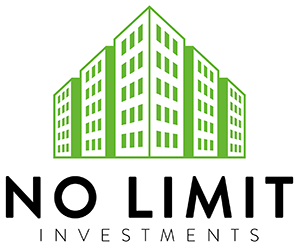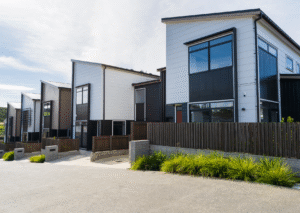What Is Real Estate Flipping and Why Is It Popular Among Investors?
Real estate flipping refers to the process of buying properties at a lower price, renovating them, and selling them for a profit within a relatively short time frame. This investment strategy has grown in popularity as more individuals seek alternative sources of income and opportunities to build wealth through tangible assets. When structured correctly, real estate flipping can yield significant returns. However, poor planning or lack of financial knowledge can lead to substantial losses.
Flipping has become attractive because of its short investment cycle and the ability to leverage financing options such as fix and flip loans or cash-out refinances. By accessing short-term capital through these financial tools, investors can acquire and renovate properties quickly, reducing holding costs and maximizing resale value.
What Are the Key Steps Involved in a Successful Real Estate Flip?
A successful flip follows a clear structure that minimizes risk and increases profitability. Investors typically go through the following steps:
- Market Research and Property Selection: Understanding local market trends, demand, and pricing helps identify undervalued properties.
- Financing the Purchase: Many investors rely on fix and flip loans to cover acquisition and renovation costs.
- Rehabilitation Planning: Determining what upgrades will increase the property’s value the most while maintaining a strict budget.
- Project Execution: Managing renovations efficiently to stay within budget and timelines.
- Marketing and Selling: Listing the renovated property strategically to appeal to the right buyers.
To support these stages, investors often turn to real estate financing solutions that provide flexibility and scalability. Companies like No Limit Investments offer specialized loans such as BRRRR financing, buy and hold mortgages, and DSCR loans to help investors move from single flips to full portfolios.
How Can Investors Evaluate Potential Flip Properties Effectively?
The foundation of a profitable flip is purchasing the right property. Investors should analyze:
- Neighborhood Value Trends: Are prices appreciating or declining?
- After-Repair Value (ARV): The estimated market value after renovations are completed.
- Repair Costs: Obtain professional estimates for realistic renovation budgets.
- Comparable Sales (Comps): Recent sales of similar properties within the area.
- Holding and Selling Costs: Taxes, utilities, insurance, and closing fees.
Using the 70% rule, a common formula in flipping, can help determine an appropriate purchase price. The rule states that an investor should pay no more than 70% of the ARV minus repair costs. For instance, if a home’s ARV is $300,000 and repairs cost $60,000, the maximum purchase price should be around $150,000.
Financing partners offering credit and debt advisory services can help structure these calculations effectively, ensuring that an investor’s loan aligns with their risk tolerance and financial goals.
What Financing Options Can Support Real Estate Flipping Projects?
Financing is often the most critical component of real estate flipping. A variety of funding structures can be used depending on the investor’s experience, credit profile, and project type:
- Fix and Flip Loans: Short-term funding used to buy, renovate, and sell properties quickly.
- Cash-Out Refinance: Allows investors to access equity from previous projects to fund new flips.
- BRRRR Financing (Buy, Rehab, Rent, Refinance, Repeat): Ideal for investors transitioning from flipping to building long-term rental portfolios.
- DSCR Loans (Debt Service Coverage Ratio): Enables investors to qualify based on property cash flow rather than personal income.
- Business Credit Facilities: Flexible capital options for professional flippers managing multiple projects simultaneously.
Each option provides unique benefits. For instance, fix and flip loans emphasize speed and convenience, while BRRRR and DSCR loans support scaling a portfolio for future passive income.
How Can Risk Be Minimized in Real Estate Flipping?
While flipping offers high potential returns, it also carries risks such as unexpected repairs, market downturns, and financing challenges. To minimize these risks, investors can follow several best practices:
- Conduct Thorough Inspections: Always inspect structural, electrical, and plumbing systems before closing a deal.
- Maintain an Emergency Fund: Allocate at least 10%–15% of the project budget for unforeseen costs.
- Use Reliable Contractors: Build relationships with licensed professionals to ensure quality work.
- Plan for Exit Strategies: Consider renting the property if the market cools instead of selling at a loss.
- Partner with Experienced Lenders: Institutions offering growth and development services can guide investors in diversifying and managing projects efficiently.
Working with knowledgeable advisors helps balance aggressive profit goals with prudent risk management.
How Do Real Estate Flippers Maximize Profit Margins?
Maximizing profit in flipping depends on managing both time and money effectively. Some strategies include:
- Focus on High-ROI Renovations: Kitchens, bathrooms, and curb appeal upgrades provide the greatest returns.
- Negotiate Material Costs: Buy in bulk or partner with suppliers for discounts.
- Monitor Market Timing: List properties during high-demand seasons.
- Limit Over-Improvement: Avoid renovations that exceed neighborhood standards.
- Leverage Financing Tools: Using real estate financing solutions from No Limit Investments allows investors to free up capital for multiple simultaneous projects.
Ultimately, profitability comes from buying right, renovating smart, and selling efficiently.
How Can Technology Improve the Real Estate Flipping Process?
Technology plays an increasingly important role in modern real estate investment. Digital tools can streamline property analysis, project management, and financing. Examples include:
- Property Data Platforms: Provide insight into neighborhood trends, comparable sales, and property conditions.
- Project Management Software: Tracks renovation timelines and budgets.
- Online Lending Platforms: Simplify access to new construction loans and real estate financing solutions.
- Virtual Tours and Digital Marketing: Enhance property listings to attract buyers faster.
By integrating technology, investors reduce manual errors, increase transparency, and accelerate decision-making, leading to faster flips and improved profits.
What Common Mistakes Should Be Avoided in Real Estate Flipping?
Even experienced investors can make mistakes that reduce profitability. The most common include:
- Underestimating Renovation Costs: Overruns can erase potential profits.
- Ignoring Local Regulations: Zoning laws, permits, and inspection requirements must be met.
- Overleveraging: Taking on too many projects without proper financing can strain liquidity.
- Poor Time Management: Delays increase holding costs and reduce ROI.
- Failing to Research the Market: Buying in declining neighborhoods can lead to losses.
To prevent these issues, investors can rely on partners that provide business credit facilities and credit and debt advisory services. These resources ensure sustainable funding and help align investment strategies with financial stability.
How Can No Limit Investments Help You Build a Profitable Flipping Strategy?

Building a successful flipping business requires more than just property knowledge; it demands financial strategy, structured planning, and dependable support. No Limit Investments offers a full range of funding and advisory solutions to guide investors at every stage of their journey.
From fix and flip loans for short-term projects to buy and hold mortgages for those transitioning into rental investments, No Limit Investments creates financing pathways designed for growth. Their BRRRR financing, cash-out refinance, and DSCR loans enable investors to recycle capital efficiently, while credit and debt advisory and growth and development services provide guidance for scaling operations responsibly.
If you are ready to take your real estate flipping career to the next level, visit No Limit Investments to explore tailored financing options and expert support that help you maximize profits and minimize risk.
Final Thoughts
Real estate flipping offers one of the most dynamic opportunities in modern investing, blending creativity, financial strategy, and entrepreneurship. Success depends on selecting the right properties, using smart financing tools, and maintaining strong risk controls. Investors who approach flipping as a structured business, not a gamble, can achieve sustainable profits and long-term growth.
With expert guidance and flexible financial solutions from No Limit Investments, individuals can confidently transform undervalued properties into thriving investments. The right structure, knowledge, and support make the difference between a one-time project and a lasting real estate business.
Works Cited
“House Flipping Trends.” U.S. Census Bureau, 2024, www.census.gov/construction/chars/index.html.
“Real Estate Financing Basics.” Federal Deposit Insurance Corporation (FDIC), 2024, www.fdic.gov/resources/smallbusiness.
“Understanding Home Renovation ROI.” National Association of Realtors, 2024, www.nar.realtor/research-and-statistics.
“Using DSCR Loans for Real Estate Investment.” U.S. Small Business Administration (SBA), 2024, www.sba.gov/funding-programs.
“No Limit Investments.” No Limit Investments, 2025, https://nolimitinvestments.net/.
Frequently Asked Questions
- What is real estate flipping?
Real estate flipping is the process of purchasing undervalued properties, renovating them, and selling them at a higher price for profit within a short time frame.
- How can investors finance real estate flipping projects?
Investors can use financing tools such as fix and flip loans, cash-out refinance, BRRRR financing, and DSCR loans to fund and scale their flipping operations.
- What are the main risks involved in real estate flipping?
Common risks include underestimating repair costs, market fluctuations, and financing delays. Proper planning and working with trusted lenders can minimize these risks.
- How can investors ensure maximum profitability when flipping homes?
To maximize profit, investors should buy below market value, manage renovation costs, and use flexible funding from sources like No Limit Investments for faster project completion.
- How can No Limit Investments help real estate investors succeed?
No Limit Investments offers tailored financing solutions, such as fix & flip loans, buy & hold mortgages, BRRRR financing, and DSCR loans, to help investors grow confidently and profitably.







